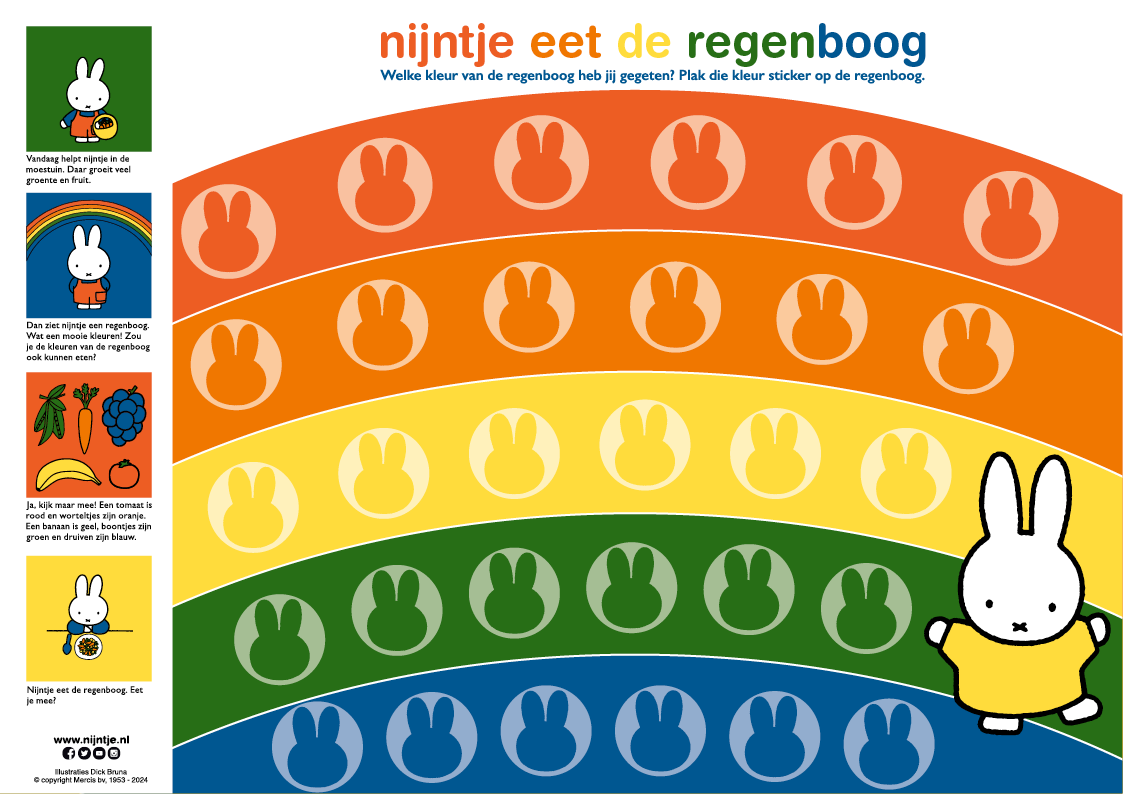
Can parents get their children to eat new types of fruit and vegetables in a playful way? This question is central to a study into experiences with the “Miffy eats the rainbow” method. Researchers from Wageningen University & Research developed this colorful approach in collaboration with Mercis, the rights agency and the publisher of Dick Bruna’s books. They call on parents of young children to participate.
From beetroot to green kiwi
In the study, the researchers test parents’ experiences with the method when they use it at home. Can this be applied well in daily life and how effective is it for their child? The researchers previously tested “Miffy eats the rainbow” in classes at various primary schools and the results were promising. Miffy’s rainbow consists of the following types of fruit and vegetables:
- Red: red apple, pomegranate, beetroot, radish
- Orange: orange, persimmon, orange pepper, pumpkin
- Yellow: banana, honeydew melon, corn, yellow pepper
- Green: Pear, kiwi, leek, avocado
- Blue: blackberries, figs, purple carrot, eggplant
Miffy stickers
There are special “Miffy eats the rainbow” stickers to stick on the free downloadable and printable poster. Between March 11 and 23, 2024, everyone can pick up these stickers for free at Bruna or ReadShop stores (sold out). Every time a child eats a certain color of fruit or vegetable, a sticker of that color can be placed on the poster. This way the child eats all the colors of the rainbow, just like Miffy. Parents or caregivers of young children can then complete a questionnaire and participate in the study.
The importance of vegetables and fruit
Fruit and vegetables are extremely important for a child’s health and lay the foundation for a healthy diet later. Yet many children in the Netherlands still do not eat enough fruit and vegetables. About 95 percent of children aged 4 to 11 do not meet the recommendations for the daily amount of vegetables. On average they eat less than half of this. Only 2 in 5 meet the recommendations for both fruit and vegetable intake (125-175 grams of vegetables per day and 1.5 pieces of fruit for children aged 4-8 years). A healthy diet prevents many weight and (later) health problems in children.
Source: Wageningen University & Research




